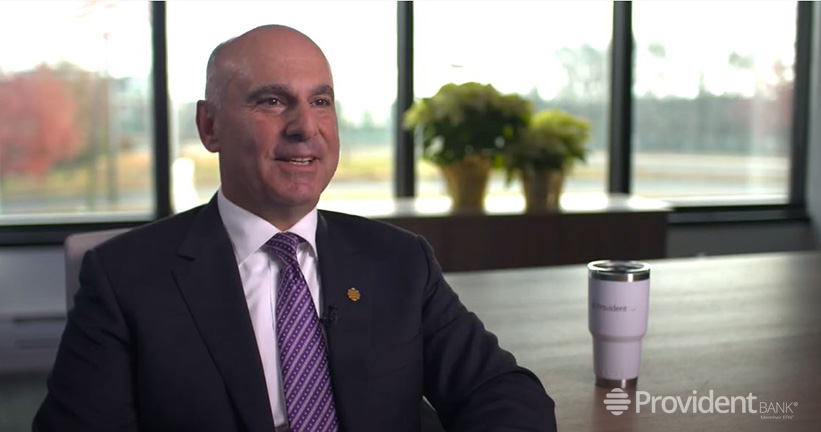
FDIC-Insured - Backed by the full faith and credit of the U.S. Government

FDIC-Insured - Backed by the full faith and credit of the U.S. Government
 VIEW ALL EDUCATION & INSIGHTS
VIEW ALL EDUCATION & INSIGHTS
March 10, 2016
FDIC Publishes a Bank Customer's Guide to Cybersecurity

Consumers increasingly rely on computers and the Internet for everything from shopping and communicating to banking and bill paying. While the benefits of faster and more convenient "cyber" services are clear, the strategies for preventing online fraud and theft may not be as well-known by many bank customers. That is why the FDIC has produced a special edition of the agency's quarterly FDIC Consumer News (Winter 2016) entitled "A Bank Customer's Guide to Cybersecurity." Here is a brief overview of the articles and other features in this special issue.
Safety precautions to take before connecting to the Internet with a personal computer, laptop, smartphone or tablet: The lead article discusses ways to protect log-in information for bank accounts and other financial accounts, including the use of "strong" user IDs and passwords that will be hard for a hacker to guess, basic security measures such as security software updates, and the need to be careful where and how to connect to the Internet. Other articles focus on security measures when using a smartphone or tablet (including "auto lock" features and the ability to remotely remove data if a mobile device is lost or stolen), how to protect computers from malicious software ("malware") that can steal valuable personal financial information, and ideas to help small businesses protect against losses from cyberattacks.
Tips on how to avoid identity theft online: One article advises on identifying and avoiding "phishing" and "pharming" scams that start with fake emails and websites and end with consumers providing Social Security numbers, bank account numbers and other valuable details. A second article offers assistance on preventing identity thieves from using social networking sites to learn enough information about individuals to figure out passwords, access financial accounts or commit identity theft. And a third provides guidance to help parents and caregivers protect young people from cyber-related identity theft and financial fraud, including the need to secure all electronics connected to the Web, even video games, because the equipment may link to information such as credit or debit card numbers.
What to know about the roles that banks and the government play in protecting customers: As explained in one article, federal law and regulations require financial institutions to have programs to ensure the security and confidentiality of customer information. The article also notes that banking regulators expect the institutions they supervise to have a framework for learning about emerging threats and provide guidance about the steps institutions can take to be prepared. Another article describes how federal consumer laws and financial industry practices protect cybertheft victims from losses under certain circumstances. And, our "Dear FDIC" feature answers questions about deposit insurance coverage and online banking.
Additional resources from the FDIC that can help educate consumers: The back of the guide features an eight-question quiz to test a consumer's knowledge of key information in this issue and a checklist with reminders about 10 simple things bank customers can do to help protect themselves from online criminals.
The goal of FDIC Consumer News is to deliver timely, reliable and innovative tips and information about financial matters, free of charge. The Winter 2016 special edition on cybersecurity can be read or printed at www.fdic.gov/consumers/consumer/news/cnwin16/. Check back there for coming versions of this issue for e-readers and portable audio (MP3) players. To find current and past issues, visit www.fdic.gov/resources/consumers/consumer-news/, or request paper copies by contacting the FDIC's Public Information Center in writing at 3501 North Fairfax Drive, Room E-1002, Arlington, VA 22226, by emailing [email protected], or toll-free at 1-877-275-3342.To receive an email about each new issue of the quarterly FDIC Consumer News with links to stories, go to service.govdelivery.com.
The FDIC encourages financial institutions, government agencies, consumer organizations, educators, the media, and anyone else to help make the tips and information in FDIC Consumer News widely available. The publication may be reprinted in whole or in part without permission. Please credit FDIC Consumer News. Organizations also may link to or mention the FDIC Web site.
Congress created the Federal Deposit Insurance Corporation in 1933 to restore public confidence in the nation's banking system. The FDIC insures deposits at the nation's banks and savings associations, 6,182 as of December 31, 2015. It promotes the safety and soundness of these institutions by identifying, monitoring and addressing risks to which they are exposed. The FDIC receives no federal tax dollars—insured financial institutions fund its operations.
FDIC press releases and other information are available on the Internet at www.fdic.gov, by subscription electronically (go to service.govdelivery.com/accounts/USFDIC/subscriber/new) and may also be obtained through the FDIC's Public Information Center (877-275-3342 or 703-562-2200).








 Views
Views


 Views
Views

 Go Back
Go Back











